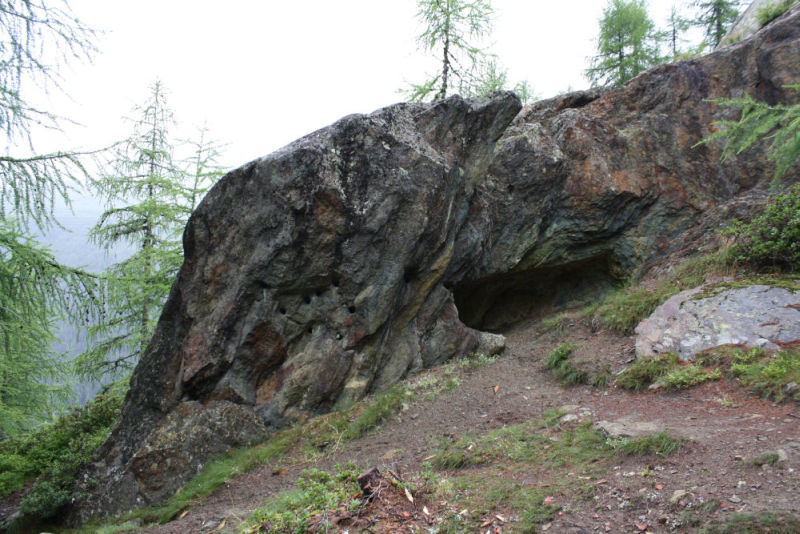Sembra che i sostenitori dell´"Impatto cosmico del Dryas recente" non si danno facilmente per vinti, anche dopo l´ennesima "sbufalata" dei loro "risultati" (poiché le presunte gocce di materiale fuso scoperte nell'odierna Siria sono state identificate come scorie di focolai…)
L´ipotesi é stata resa popolare a seguito di una presentazione scientifica durante l´assemblea dei geologi americani nella primavera 2007, ma uno degli autori - il fisico Richard Firestone - è dal 1990 che cerca di promuove questa sua idea (anche con la pubblicazione di libri a tema).
I ricercatori dell´istituzione di Richard Firestone e del Lawrence Berkeley National Laboratory nel 2007 affermarono di avere scoperto delle inusuali concentrazioni dell´elemento Iridio, grani irregolari di metallo, nanodiamanti e fullereni in uno strato ricco di componenti organici - i residui di un bolide extraterrestre mischiato ai residui di animali e piante carbonizzati dall´impatto. A detta dei ricercatori avevano scoperto perfino dei resti di mammut e bisonti, che mostrerebbero tracce dirette dell´impatto. Piccoli fori nelle ossa (con diametri di 2-3 mm), un alone bruciato e frammenti magnetici con un alto contenuto di ferro e nickel - i frammenti del bolide che come delle cartucce a pallettoni avrebbero sterminato intere specie. Poco importa che nessun ricercatore al di fuori del gruppo di lavoro di Firestone è mai stato in grado di verificare le analisi, sembra mancare anche la prova più convincente - il cratere d´impatto. Per spiegare la mancanza i ricercatori proposero che il bolide era esploso nell´atmosfera (verosimilmente anche l´esplosione di Tunguska può essere spiegata in modo simile) - l'assenza di prove non è prova di assenza...
Il calore dell´impatto avrebbe fuso anche le calotte glaciali é prodotto una grande quantità di acqua dolce che affluendo nel Nordatlantico avrebbe interrotto la corrente del golfo - l´abbassamento delle temperature sul continente europeo (dal periodo glaciale del Dryas, circa 8.000 anni fa, l´ipotesi prende anche il nome) avrebbe alla fine portato ad una estinzione di massa anche in Europa e Asia.
Ma l´intera ipotesi crolla se si analizzano i dati cronologici a disposizione, che mostrano un graduale declino della specie di mammiferi dopo la fine dell´ultima glaciazione. Una ricerca condotto su 4.532 siti archeologici in Europa e Siberia, e 1.177 resti di Mammut e Mastodonte in Europa, Siberia e America settentrionale hanno mostrato delle età comprese tra 45.000 a 12.000 anni. Il mammut lanoso raggiunse un massimo nella popolazione, seguito da un declino, tra i 16.000 e 15.500 anni, in Europa e Siberia tra i 14.500 e 13.500 anni, e in America dopo i 13.000 anni - in concordanza con la fine dell´era glaciale e un netto cambio climatico e ambientale. Invocare un impatto extraterrestre per spiegare l´estinzione della fauna pleistocenica - senza alcune prove e 5.000 anni troppo tardi - sembra abbastanza inutile (si aspetta la prossima pubblicazione...).
Bibliografia:
BECKER (2007): Abstract: The End Pleistocene Extinction Event – What Caused It? Eos Trans. AGU, Abstract PP41A-03
BECKER (2007): Ice Age Impact. mp3 (4MB). (Interview by the Canadian Broadcast)
FIRESTONE, R.B.; WEST, A.; KENNETT, J.P.; BECKER, L.; BUNCH, T.E. et al. (2007): Evidence for an extraterrestrial impact 12,900 years ago that contributed to the megafaunal extinctions and the Younger Dryas cooling. Proceedings of the National Academy of Sciences of the United States of America 104(41): 16016-16021You
HAYNES, C.V. (2007): Younger Dryas ”black mats” and the Rancholabrean termination in North America. Proceedings of the National Academy of Sciences of the United States of America 105(18): 6520-6525
KENNETT, D.J.; KENNETT, J.P.; WEST, A.; WEST, G.J.; BUNCH, T.E. et al . (2009): Shock-synthesized hexagonal diamonds in Younger Dryas boundary sediments. Proceedings of the National Academy of Sciences of the United States of America 106(31): 12623-12638
KERR, R.A. (2007): Mammoth-Killer Impact Gets Mixed Reception From Earth Scientists. Science 316: 1264-1265
KERR, R.A. (2008): PLANETARY IMPACTS: Did the Mammoth Slayer Leave a Diamond Calling Card? Science 323: 26
LEVY, S. (2006): Clashing with Titans. BioScience 56(4) : 292-298
PINTER, N.; SCOTT, A.C.; DAULTON, T.L.; PODOLL, A.; KOEBERL, C.; ANDERSON, R.S.; ISHMAN, S.E. (2011): The Younger Dryas impact hypothesis: A requiem. Earth Science Reviews. Article in Press
UGAN, A. & BYERS, D. (2007): Geographic and temporal trends in proboscidean and human radiocarbon histories during the late Pleistocene. Quaternary Science Reviews.26: 3017-3440
BECKER (2007): Ice Age Impact. mp3 (4MB). (Interview by the Canadian Broadcast)
FIRESTONE, R.B.; WEST, A.; KENNETT, J.P.; BECKER, L.; BUNCH, T.E. et al. (2007): Evidence for an extraterrestrial impact 12,900 years ago that contributed to the megafaunal extinctions and the Younger Dryas cooling. Proceedings of the National Academy of Sciences of the United States of America 104(41): 16016-16021You
HAYNES, C.V. (2007): Younger Dryas ”black mats” and the Rancholabrean termination in North America. Proceedings of the National Academy of Sciences of the United States of America 105(18): 6520-6525
KENNETT, D.J.; KENNETT, J.P.; WEST, A.; WEST, G.J.; BUNCH, T.E. et al . (2009): Shock-synthesized hexagonal diamonds in Younger Dryas boundary sediments. Proceedings of the National Academy of Sciences of the United States of America 106(31): 12623-12638
KERR, R.A. (2007): Mammoth-Killer Impact Gets Mixed Reception From Earth Scientists. Science 316: 1264-1265
KERR, R.A. (2008): PLANETARY IMPACTS: Did the Mammoth Slayer Leave a Diamond Calling Card? Science 323: 26
LEVY, S. (2006): Clashing with Titans. BioScience 56(4) : 292-298
PINTER, N.; SCOTT, A.C.; DAULTON, T.L.; PODOLL, A.; KOEBERL, C.; ANDERSON, R.S.; ISHMAN, S.E. (2011): The Younger Dryas impact hypothesis: A requiem. Earth Science Reviews. Article in Press
UGAN, A. & BYERS, D. (2007): Geographic and temporal trends in proboscidean and human radiocarbon histories during the late Pleistocene. Quaternary Science Reviews.26: 3017-3440







